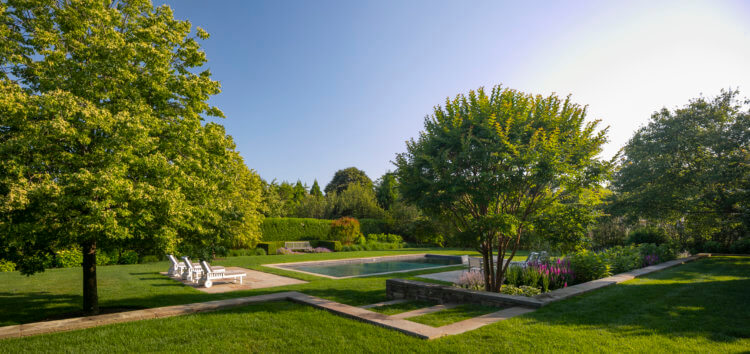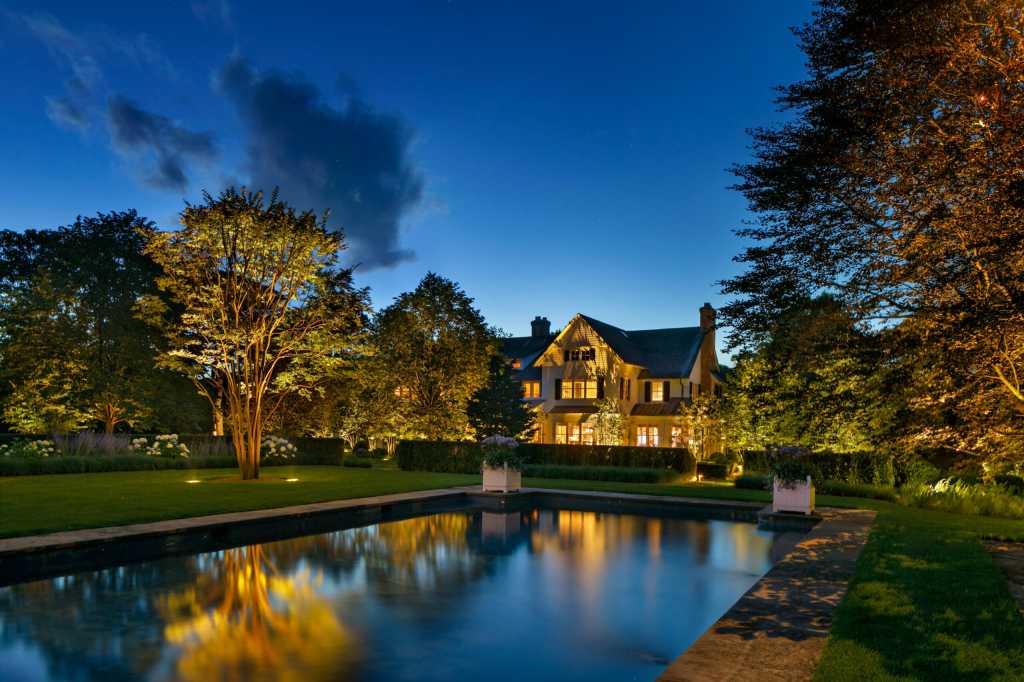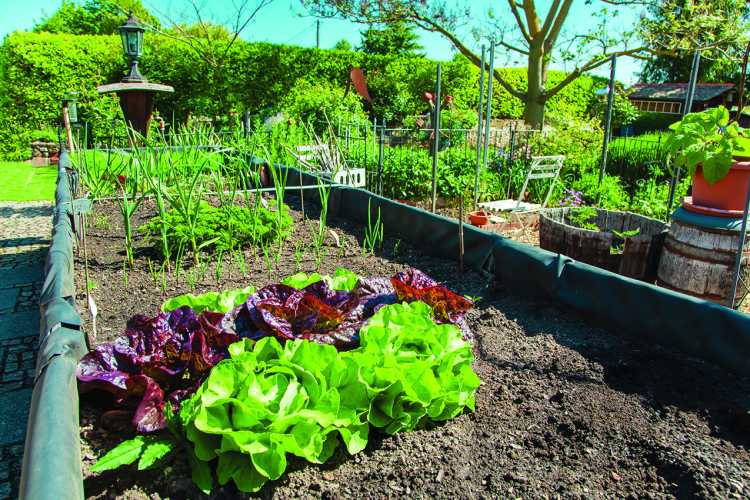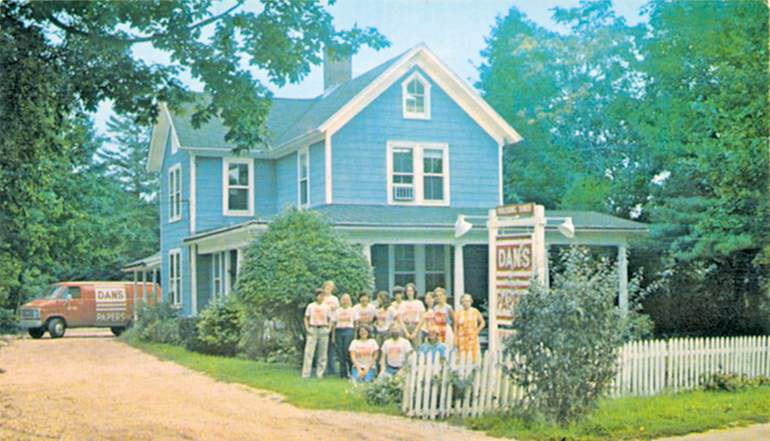Think Hamptons and hedges naturally come to mind: rows of towering, manicured privets that keep prying eyes from seeing into homes and estates.
While privacy privets are still in vogue here, hedges are being utilized in a myriad of versatile and interesting ways by landscape architect Michael Derrig, owner of Landscape Details, an East Hampton-based landscaping and design firm.
Derrig, who’s honed his craft for more than 25 years, has designed landscapes for a variety of realms — ballparks, zoos and college campuses — and worked at the Manhattan landscape architecture firm Kelly Varnell before “planting” his shingle in the Hamptons.
Since founding Landscape Details in 2000, Derrig has lent his imaginative aesthetic to numerous projects around the Hamptons, combining tasteful plantings with exquisite masonry work and frequently using hedges as the verdant mainstay of the design.
The COVID-19 pandemic has not changed Derrig’s design outlook. He continues to create glorious outdoor rooms and living spaces. One difference: People are spending more time in their weekend homes and looking to amend their landscapes to maintain their privacy beyond the high season.
Beyond Privet
Hedges come in numerous varieties, from the commonly used privet — a semi-evergreen that holds its leaves until January or February — to evergreen hedges for year-round screening, like arborvitae, which can be planted at 18 feet high.
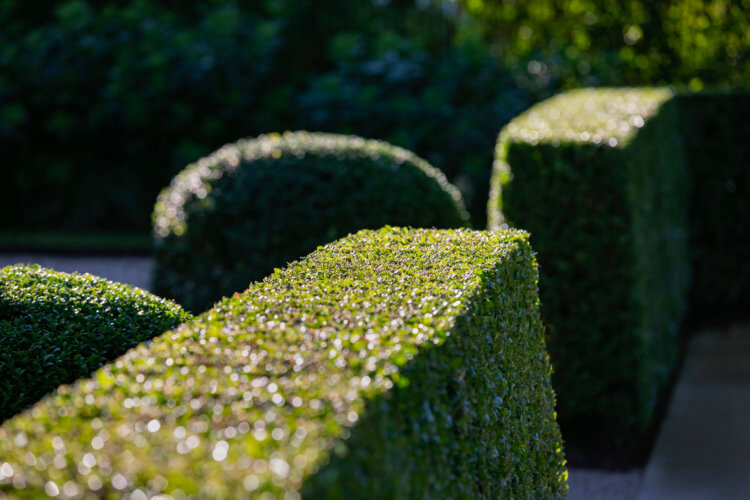
You can make almost every plant into a hedge, Derrig says.
“The issue is thinking outside the box: getting away from privet.
I have hedges up in my nursery made out of viburnum,” says Derrig of his firm’s 25-acre tree farm in Calverton.
Some of Derrig’s favored choices for hedge materials are the deciduous European hornbeam, little-leaf linden and European beech; semi-evergreen viburnum preganse; and evergreen ilex (Japanese holly), arborvitae, juniper, holly and boxwood.
Aerial hedges that sit high on sticks, such as hornbeam, are often planted in front of fences.
“The hedge actually starts six feet above the ground, so the hedge is in the air,” explains Derrig.
Interior hedges, often reaching an uppermost height of 30 inches, can be formed by grouping together any plant, even hydrangea.
“Hydrangea is something you don’t normally shear, but it’s still a hedge, if you put it in a line. It divides the space,” Derrig says.
The Hedge as Backdrop For the Garden
Any good landscape project starts with a clear understanding of what the client is trying to achieve, he adds. From there, Landscape Details develops schematic designs and then fills in the details, from flora to masonry.

“And you come up with something that is suitable for the architecture, for the site itself,” Derrig explains.
“Whether the site is wooded or is an old farm field — all those things come in to creating a good design.” Serving as a backdrop for the garden, hedges are figuratively the back wall and an integral part of the layered effect.
“You have hedges in the back. Then you have, let’s say, hydrangeas in front of the hedge. And then in front of them, you have grasses, ground cover, perennials,” Derrig says. “So, it’s kind of a tiered, layering effect.”
In various Hamptons landscapes, Derrig’s creative use of hedges really stand out.
For an East Hampton village retreat, crepe myrtle trees, which line a dining table to define the space, are lit up from the grass and trees to reflect dramatically on the nearby pool. Multilevel boxwood hedges surrounded by ornamental grasses delineate the patio from the dining terrace.
Thirty-inch high ilex hedges separate garden spaces for a project on Further Lane, framing garden beds of catmint, roses, Russian sage and loosestrife overlooking the pool.
“These little hedges define spaces,” Derrig explains. “They create rooms. Within those rooms are gardens
and pathways.”

Stone walls dot the landscape, some of which are parapet — equal height on both sides — and others serve to level the yard.
“They split the grade and they terrace the property, so you go from one level space to another,” Derrig says.
On East Hampton’s Hook Pond, Derrig created an al fresco dining room with an allée of crepe myrtle trees along a gravel path surrounded by manses of limelight hydrangea, ornamental grasses, Russian sage and boxwood. With a 36-inch grade change from the pool to the house, a property on East Hampton’s La
Forest Lane required terracing with grass-covered, hand-chiseled fieldstone steps and surrounding walls.
Derrig added stone pathways between the pool and dining terrace, which he flanked with double rows of
London plane trees and added ilex hedges to demarcate the pool area.
On a tighter lot on Mill Hill Lane in East Hampton Derrig planted tall and narrow privet to surround the
property. Within the landscape, he utilized rounded, cloudlike boxwood, hydrangea and a garden sited
behind the pool, brimming with dahlias, phlox and salvia — a blending of shapes, sizes and specimens to
achieve a sense of serenity through a natural setting.
“Some of the flowers are fragrant. And, when you’re there relaxing, visually, you’re looking at a beautiful garden,” he says.
A Sagg Pond project benefitted from mature trees, including a majestic black oak and a stand of black tupelos near the pond, “that have some real prominence and create the character,” says Derrig, who designed a stunning arcade of rose of Sharon along a gravel path rimmed with lily turf peppered with lollipop
verbena, where compact ilex hedges form a border at the edge.
Despite their ample beauty and utility, hedges require constant care: lots of trimming and fertilization, advises Derrig.
“Good hedges make good neighbors,” Derrig says. Putting a finer point on it, he adds, “Green, well-taken-care-of hedges make good neighbors.”
